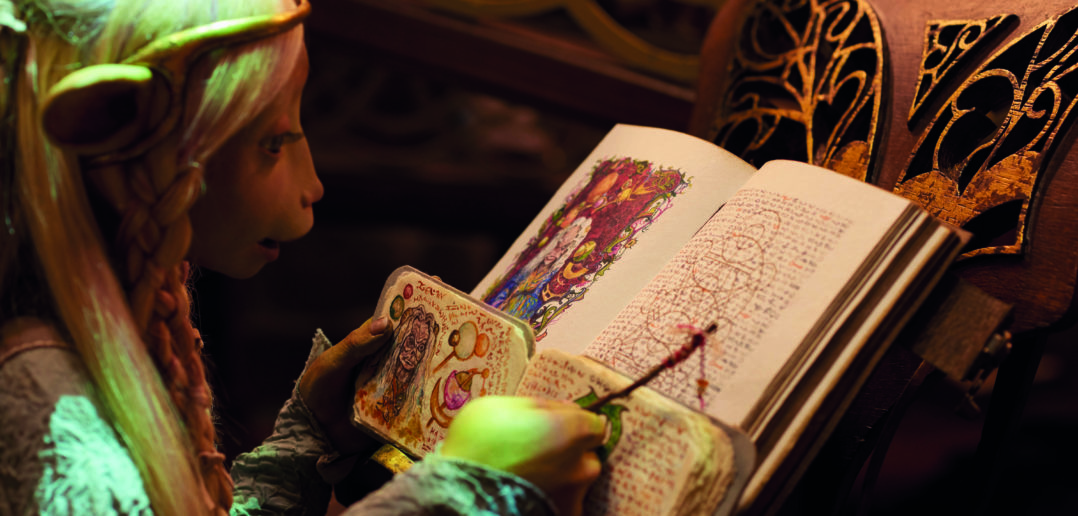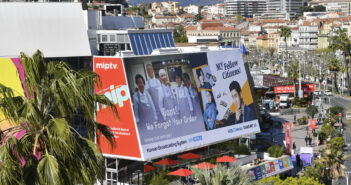The global TV industry is acknowledging that tackling diversity in kids’ shows is essential if it is to retain young people’s interest in on-screen entertainment. But it’s proving to be easier said than done, writes Juliana Koranteng.
Putting diversity first in kids TV
According to industry reports, children need shows that demonstrate the multi-faceted nature of real lives, families, friends and communities, and their different skin colours, races, genders, sexual orientation, religions, economic circumstances and physical abilities.
The increasing competition from streaming platforms and other digital services has shown children are likely to go elsewhere for entertainment when they do not see themselves, their cultures and lifestyles reflected on television. “The Muppet’s Kermit singing It’s Not Easy Being Green remains a war cry that we need to reflect children of different colours, from different economic backgrounds,” says Halle Stanford, president of television at The Jim Henson Company. She recalls how a generation of content creators influenced by the revered Sesame Street were trained to make shows that mirrored the differences within communities.
An example is Henson’s animation Splash And Bubbles, which had a MIPJunior world premiere in 2016 and has been praised for training a new cohort of puppeteers and animators to make diversity part of their storytelling roots. Another Henson animation series, Dinosaur Train, centres on a Tyrannosaurus Rex adopted by a family of Pteranodons. The precociously lovable lead character in Sid The Science Kid, a CGI animation show also from Henson, has an African-American mother and a Caucasian-Jewish father. Also in the pipeline with Netflix is the more ambitious The Dark Crystal: Age Of Resistance, a prequel to acclaimed 1982 animated film The Dark Crystal.
“This prequel has incredible diversity because the theme is that we’re stronger together,” Stanford says. “It doesn’t just focus on the race culture, but addresses women and men, and upper class versus lower class.”
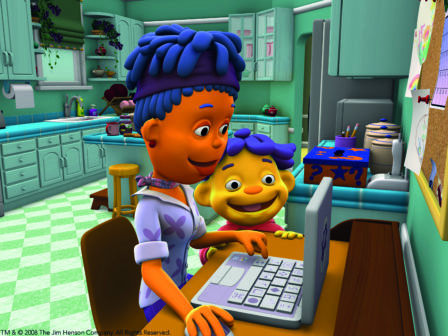
Sid The Science Kids (The Jim Henson Company)
David Kleeman, senior vice-president of global trends at UK-headquartered kids-research agency Dubit, is happy to see the industry move on from the days of tokenism. Gone is the need to have a character representing a different ethnicity, skin colour, gender and/or disability to tick the politically correct boxes. “The first attempts at diversity were awkward,” he says.
“Today, we’ve got a better understanding of how to make characters represent who they are. It’s more important to have kids seeing themselves in the media over the course of viewing and playing.”
Multiculturalism: embracing our differences
Multicultural lifestyles and neighbourhoods are being portrayed in various creative ways to reach young viewers. “We have to be mindful at all times of who our audience is and that there is no absolute norm, whether the child comes from a dislocated family, a blended family or any other make-up of family,” says Martin Baynton, co-owner and chief creative officer at Pukeko Pictures. The New Zealand-based company’s new pre-school animated series, Book Hungry Bears, is about the adventures of four bears — a polar bear, a brown bear, a panda and a koala. “Koalas aren’t technically bears but he’s included within the group,” Baynton explains.
“These characters are polycultural — they don’t just accept their differences, they don’t even recognise them.”
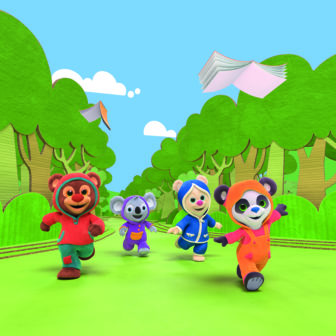
Book Hungry Bears (Pukeko Pictures)
Other children’s TV ventures that have placed multiculturalism at the heart of their storytelling include Viacom-owned network Nickelodeon, whose forthcoming animation series The Casagrandes is a multi-generational Hispanic-American family spin-off from hit series The Loud House, which already includes a family with two fathers. Also addressing the network’s diverse audience is Santiago Of The Seas, an interactive animation series featuring characters from the Latino-Caribbean community as well as those of Latin American descent. And the rebooted Blue’s Clues & You!, which went into production recently, will feature localised editions in different countries.
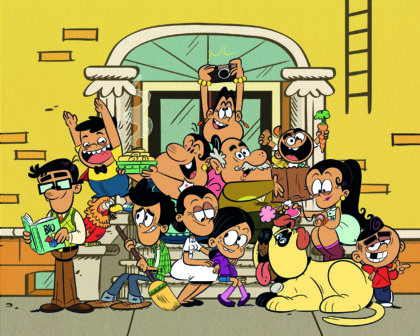
The Casagrandes (Nickelodeon’)
“The brand’s DNA is to be everywhere kids are and reflect where they are today,” says Nina Hahn, Nickelodeon International’s senior vice-president of international production and development. “Also, we write about a real world that is diverse.”
Caroline Tyre, senior vice-president of international distribution and head of Genius Brands Network, the US-based entertainment company targeting toddlers and tweens, says children know if sincerity is lacking. Llama Llama, the Genius Brands animation series that premiered on Netflix last year, focuses on the challenges and fears experienced by kids everywhere, no matter their background.
“The presentation of storylines and situations that promote inclusivity and diversity isn’t something that we committed to because it was fashionable or trending, but because it’s simply the right thing to do,” Tyre adds.
Oda Upside Down, the 10-minute magic-realism series from Copenhagen-based SAM Productions for Danish channel DR Ramasjang, uses magic and imagination to show how looking at life in a totally different way can broaden our perspective. “In a playful and magical universe, it seems an obvious possibility to go against stereotypes to ensure that all kids have something to reflect on when watching TV,” says Oda Upside Down producer Cathrine Skotte.
“We found it important to bring in diversity as a non-discussable thing, representing it as a mirror to society without any prior assumptions to how our audience might react.”
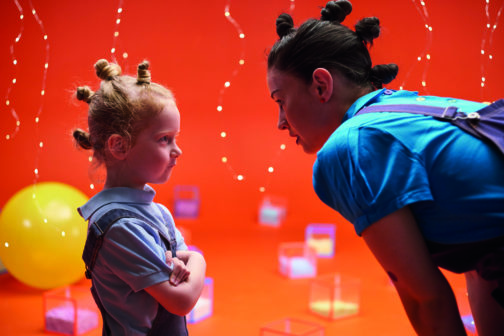
Oda Upside Down (Sam Productions)
A focus on Africa
New UK/French distribution and production outfit Mounia Aram Company has been set up to make diversity in children’s entertainment truly global by looking to Africa for shows that appeal to an international audience.
Founder and CEO Mounia Aram says:
“My primary goal is to bring the best animated content from Africa to the international market. I want to bring African animation stories, movies and series the success they deserve and build more awareness around the 54 countries the continent is made of.”
Aram’s is not the only TV company that sees Africa as a source of international inspiration. London-based independent Cake Entertainment and South Africa’s Triggerfish Animation Studios have been scouting for female African writers to work on Mama K’s Team 4, Netflix’s first original African animated series. Set in Zambia, it follows the antics of four schoolgirls with special powers. “They are black, but the show is ultimately about these superheroes who need to complete their homework while also trying to save the world,” says Tom van Waveren, Cake’s CEO and creative director. “And the writers are all African women, because diversity is about both sides of the camera, not only what you see on the screen.”
Equality of the sexes
There are an increasing number of children’s shows going against the traditional grain of what girls can or cannot do. Pukeko’s Baynton, who also writes kids’ books, felt convention needed to be defied when it came to the gender balance on children’s TV. Jane And The Dragon, the CGI series based on his book of the same name and co-produced by Canada’s Nelvana and New Zealand’s Weta Productions, does precisely that. “I wrote the Jane And The Dragon books because I didn’t see enough stories for girls that weren’t classic fairy tales and where the girl was in charge of her own destiny,” Baynton says.
“We shouldn’t have any group of people in our society, especially children, that feel like they can’t connect with inspiring stories and characters on the screen and feel excluded.”
The stars of Rainbow Rangers, the pre-school magical-fantasy animation hit made by Genius Brands for Nick Jr’s US network, are a multicultural team of girls who are also on a mission to defend and protect the world. Yet, as Genius Brands’ Tyre points out: “Young viewers, girls and boys alike, identify with at least one or more of the characters. Each Ranger has a distinct personality and her own special gifts, but all are strong, curious, funny, smart, take-charge, loving and compassionate.”
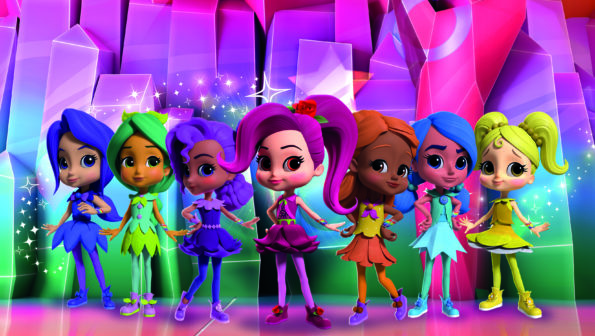
Rainbow Rangers (Genius Brands)
A similar theme is explored in Nella The Princess Knight, the Nickelodeon animation that overturns the age-old concept that only men can be knights in shining armour. “We’ve flipped many things, because that’s how we’ve always thought creatively,” Nickelodeon International’s Hahn says.
Including everyone on screen
New series Itch, from Australia’s ABC Commercial, adapted from a series of children’s books by British broadcaster Simon Mayo, tells of the adventures of a science-obsessed boy Itchingham Lofte — and its creators have taken care to present its young viewers with the right role models. “Itch is essentially a coming-of-age story, telling the story of a teenager who goes from zero to hero, overcoming obstacles in his way,” Itch Producer and managing director of the series’ production company Komixx Entertainment, Amanda Morrison, says. “He learns to stand on his own two feet and take responsibility for himself and for others, he faces conflicts, stands up to those working against him and develops complex relationships.”
Morrison adds:
“We believe the series tells our audience that it is OK to be who you are and to be proud of what you excel at, whatever that may be. As the story is grounded in reality the series will resonate and offer hope to our audience, showing them that everyone goes through an inner journey to better understand themselves and the world around them.”
Itch also features “intelligent and resourceful female characters”, something that Morrison believes is important for female viewers. “Our female teen characters, Lucy, Jack and Chloe, are equally capable and resourceful in using their smarts to outwit the adults and ultimately save the world. It is important to show that our female characters are real, flawed and make mistakes, like all teenagers,” she says. “It goes without saying that we should represent our female audience in an authentic and positive way. Jack in particular is a very physically active and appealing character who is not afraid to put herself in danger, but all of our female characters are brave and confident.” She adds:
“As a largely female creative team we wanted to ensure that Itch featured an ensemble cast and that the female characters had their own journeys and character arcs rather than simply being secondary to our male protagonists.”
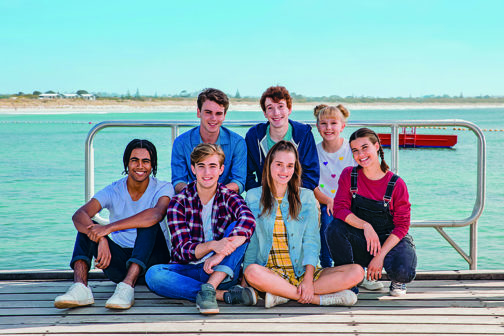
Itch (Komixx Entertainment)
Disability awareness and its impact on kids’ real-life experiences
Mounia Aram is among many industry experts who believe it is essential for the wellbeing of young viewers to see a range of abilities and appearances on screen.
“More diversity in programmes would help to stop some children from being bullied because of their appearance,” she says.
Characters who do not look or act in a way that is believed to be ‘normal’ because of a disability rarely feature in children’s TV shows, let alone star in them. But Pablo could be changing that. He is the young protagonist of the UK live-action/animation series of the same name and he suffers from autism, a disorder that can make it difficult to interact and communicate with other people. Co-produced by Cake for UK public-broadcast network CBeebies, the show sees Pablo use his condition to solve problems that confound other people. “His friends are on all different levels of the [autism]spectrum and they try to solve the problem via his drawings,” says Cake’s van Waveren. “And the characters are voiced by people on that spectrum too.”
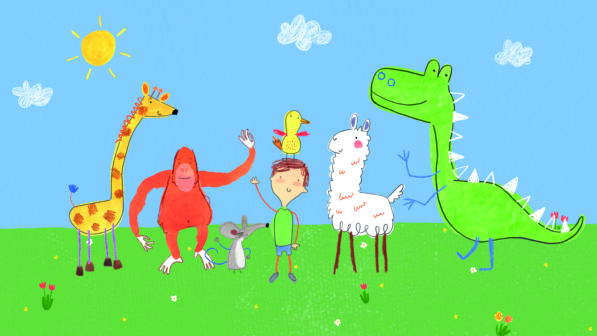
Pablo (Cake)
One of the main characters in Nickelodeon’s The Loud House has Down’s syndrome, as does the titular character in Punky on Hopster, the UK children’s entertainment streaming app.
As Genius Brands’ Tyre notes: “We also have a character in season two of Llama Llama that has physical challenges.
But no matter what the challenge, it teaches kids that they can feel safe when they are secure at home. These are important reminder messages for parents.”
Sexual orientation: losing the taboo
People’s various sexual orientations and preferences are a fact of life, yet the subject is still taboo when addressed in children’s TV. The US state of Alabama recently banned an episode of long-running children’s series Arthur because a same-gender marriage took place in it.
Dubit’s Kleeman is heartened to see such positive storylines being organically incorporated in children’s stories. The Bravest Knight, an animation being produced by Canada’s Big Bad Boo Studios for streamer Hulu, is about a mixed-race family comprising two dads and their adopted daughter. Meanwhile, a same-sex couple has been introduced into the Hasbro franchise My Little Pony.
David Michel, president of Paris-headquartered Cottonwood Media and co-founder of Federation Entertainment, has a family where he is one of two fathers with two sons. “This is a very personal subject,” he says.
“A few years ago, representation was very forced, but we’re doing the opposite now by making it a natural part of the storytelling.”
Cultural barriers
But Michel reports that some challenges are insurmountable when targeting international audiences. For example, Cottonwood’s current hit, Find Me In Paris, is set in the French capital, is shot by a UK director and stars a cast of teenagers from different countries. But the introduction of a gay romance in the third season could create hurdles in terms of sales to countries such as Russia, where the promotion of “non-traditional sexual relationships” is banned. “In the same say we would handle a boy-girl romance, it isn’t sexualised,” Michel adds. “While the boy-boy relationship went unnoticed by several broadcasters, we were told the show would not be acquired in Russia as the broadcaster there would be criminally liable. So rather than edit it out, we’re not going to be in Russia.”
Genius Brand’s Tyre sums up the challenges:
“Any time you introduce a new social theme into children’s content, there are those who will embrace it as brave and empowering, and others who will see it as exposing children to issues beyond their comprehension. We’re not saying that every topic needs to be addressed but, if it touches the lives of children, they should be given the tools to understand and respond in a positive manner.”
Diversity, equality and inclusivity as a must for the future of the kids TV industry
Still a lack of diversity and representation in present-day TV
Several high-profile reports have called on the international children’s TV business to advance their efforts to incorporate diversity, equality and inclusivity in their programming for the good of the industry. Hopster, the children’s entertainment producer and streaming-TV app, recently commissioned a report from Dubit to analyse the 50 most popular pre-school programmes on UK terrestrial TV and streaming platforms. “It found they were severely lacking in representation,” says Nick Walters, Hopster’s CEO and founder. “Of the episodes we analysed, 12% had a disabled character, 12% had a BAME [black, Asian and minority ethnic] lead, 9% included working-class characters, 7% had LGBT+ characters and not a single episode had same-sex parents.”
Paving the way for a more diverse, equal and inclusive future
Hopster hopes to counter the deficit with its shows, books, games and songs such as Rainbow Stories, Julian Is A Mermaid and The Girl With Two Dads (LGBQT+); Bino & Fino (Afro-Caribbean culture); and Punky and Signed Stories (disability).
“We believe children who learn from an early age about all types of families, backgrounds and abilities will be able to nurture inclusion, and combat discrimination and bias in the future,” Walters adds.
In Germany, the International Central Institute for Youth and Educational Television (IZI), published a study in 2017 called Children’s TV Worldwide, which includes a look at the main characters’ ethnic backgrounds. And earlier this year, an article called Prejudices, Racism, Extremism was published in its Televizion magazine.
“Research has shown that children are very sensitive when it comes to observing which groups are more valued then others,” says Maya Goetz, the head of IZI. “If they don’t see their skin colour, hair structure and body shape on TV, they will build an identity of being worthless. That hurts self-esteem and can lead to aggression against others.
On the other hand, there is the common misconception that children of dominant groups will not identify with marginalised children. That definitely is not true. All children know the feeling of being marginalised. The more diverse the characters are, the more points for identification there are.”
This article was written by Juliana Koranteng, edited by Julian Newby, and appears in the MIPCOM Preview Magazine.
Want to discover new content, forge partnerships, negotiate financing and distribution agreements, find co-production opportunities and explore the latest trends in the industry?
Attend MIPTV and MIPCOM!
Want to know more about Kids’ TV Trends? Attend MIPJunior!
This and more in the MIPJunior Preview Magazine.
Read the full version below:
Learn more about this topic in the articles and videos below:
How, when and why diverse kids audiences find, consume and stick with content
Is kids’ preferred TV content changing?
Storytelling for millenials, gen Z… and more!
Where next for kids’ TV: predicting the future of children’s content
Kids buyers advisory board – Adina Pitt
Kids live-action TV strikes back in the online age

